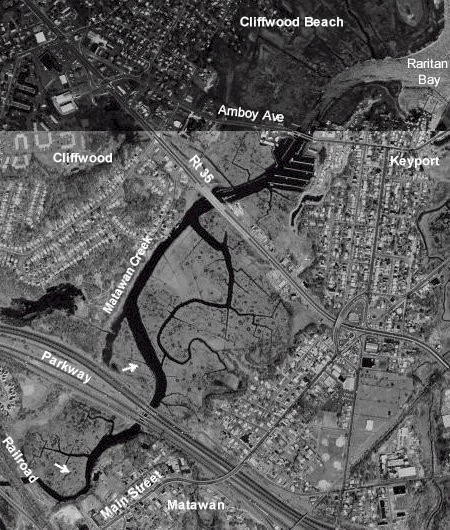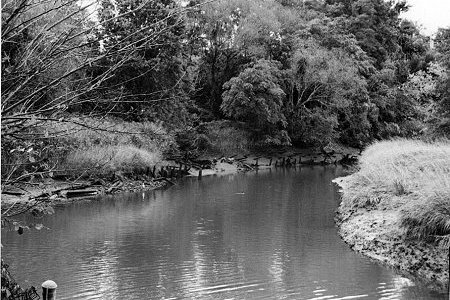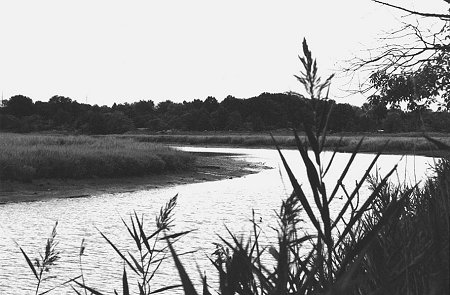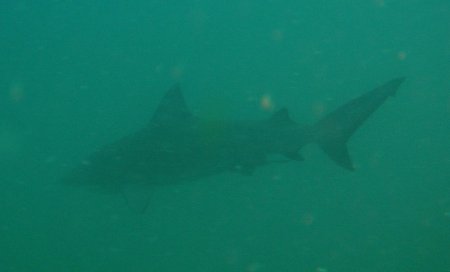Bull Shark (2/2)
The 1916 Matawan Creek Shark Attacks

The panic came slowly. On July 1, 1916, 25-year-old Charles E. Van Sant was swimming 16 yards from the shore at Beach Haven when people on the beach saw a black fin slicing towards him and shouted at him to get out. Van Sant splashed madly for the beach. As the shark closed on him, he screamed for help, then went under. The tragedy stirred no great unease along the Jersey shore; one of the minor tragedies of summer.
Five days later the level of anxiety on the Jersey shore made a quantum leap upwards. On July 6 Charles Bruder was attacked while swimming beyond the life-lines at Spring Lake.
Although Bruder's death kept swimmers close to the shore at Spring Lake the next day, even this elementary precaution extended no more than a few miles away. Spring Lake Mayor, Oliver H. Brown, established a motorboat patrol. The boats dragged bait while marksmen with rifles stood ready to shoot should a fin materialize. None did. The Mayor also ordered the beach bathing area enclosed in a shark-proof wire net, a precaution also taken by the nearby resort of Asbury Park.
July 12 brought tropical heat and humidity to Matawan. At 2 p.m., Lester Stilwell, a 12-year-old boy, and four friends headed for the Wyckoff Dock - the town's most popular swimming hole.

Shortly before Lester and his friends headed for the creek, Captain Thomas Cottrell, a retired sailor, was walking across a new Matawan Creek bridge at Amboy Avenue, about 833 yards downstream from the swimming hole. He saw beneath the sparkling creek surface a huge black shadow moving quickly upstream with the incoming tide. Cottrell did not stop to tell himself that no shark could be that far upstream, he ran for a telephone and called the town's barber, John Mulsonn, who was also the chief of police, then he ran to Main Street telling groups of boys headed for the creek, merchants and their customers: "There's a shark in the creek!" People thought he was crazy: a shark? In a creek 11 yards across at its widest? Poor old Tom's eyes must have been playing tricks on him.
Lester Stilwell was floating further away from the pier than his friends when they saw him suddenly disappear, reemerge, scream, then disappear in a flurry. His friends sprinted into Matawan shouting that Lester had had a fit in the creek and had disappeared in the water. Men, women and children were streaming from the town to the pier, among them Lester Stilwell's parents. Stanley Fisher yanked on his bathing trunks and plunged into the creek. About 200 people lined the banks while men in rowing boats poled for Stilwell's body.
The urgency of the moment was very powerful: several other men were also in the creek, making repeated dives, clawing along the mud for the boy's body. After several dives Fisher surfaced and shouted to the watchers: 'I've got it.' He had a grip on Lester's body and struck out for the nearer shore opposite the pier, followed by two men in a motorboat. He stood up in waist-deep water near the bank, then staggered, cried out, and dropped into a crouch; both hands clamped around his right leg. He was pulled into a boat. A stretcher was improvised from planks and he was carried to the Matawan railroad station. He was placed aboard the 5:06 train. At 7:45 he was being wheeled into the operating theatre of the Monmouth Memorial Hospital, he died. The townspeople - frightened and angered by the monster - collected dynamite and set underwater charges near the pier.

Just as the charges were ready for blasting, a motorboat roared upstream to the pier with another shark victim. Joseph Dunn, a 14-year-old from upper Manhattan, had been swimming with several other boys off a dock 867 yards downstream from the Wyckoff pier when someone ran up with a warning. 'There's been two shark attacks upstream - get out of the water!' the boys struck out quickly for the dock. Joseph, the last out, was on the ladder when the shark seized his right leg. 'I felt my leg going down the shark's throat - I thought it would swallow me, ' he said. Seriously injured, he was rushed to St. Peter's Hospital in New Brunswick.
Matawan Creek boiled and spurted geysers as if a primal force had been let loose. Before the sun set the town was also out of ammunition: hundreds of men lined the creek banks armed with handguns, rifles and shot-guns. A small army of newspaper reporters and photographers descended on the creek, while newsreel cameramen filmed the vengeful fury. With the incoming tide, sightings abounded; with the outgoing tide, escaping sharks abounded. A chicken wire net was strung across the creek just above Wyckoff Dock, and a strong fishnet across the bridge where Captain Cottrell sighted the black shadow.
On July 14 funeral services for Lester Stilwell, whose body had not been recovered, and Stanley Fisher were conducted in Matawan. The same day, a Manhattan taxidermist, who had caught a 5 foot shark off New Jersey, exhibited two bones found in its stomach - one of them identified by physicians as a boy's shinbone. This shark became known as "The Jersey Man-Eater".
Lester Stillwell's body was recovered several days later near the railroad crossing. Joseph Dunn survived. Fifty-nine days after the attack he left St. Peter's Hospital. His leg would always bear the purple scars, but he was able to walk away.


